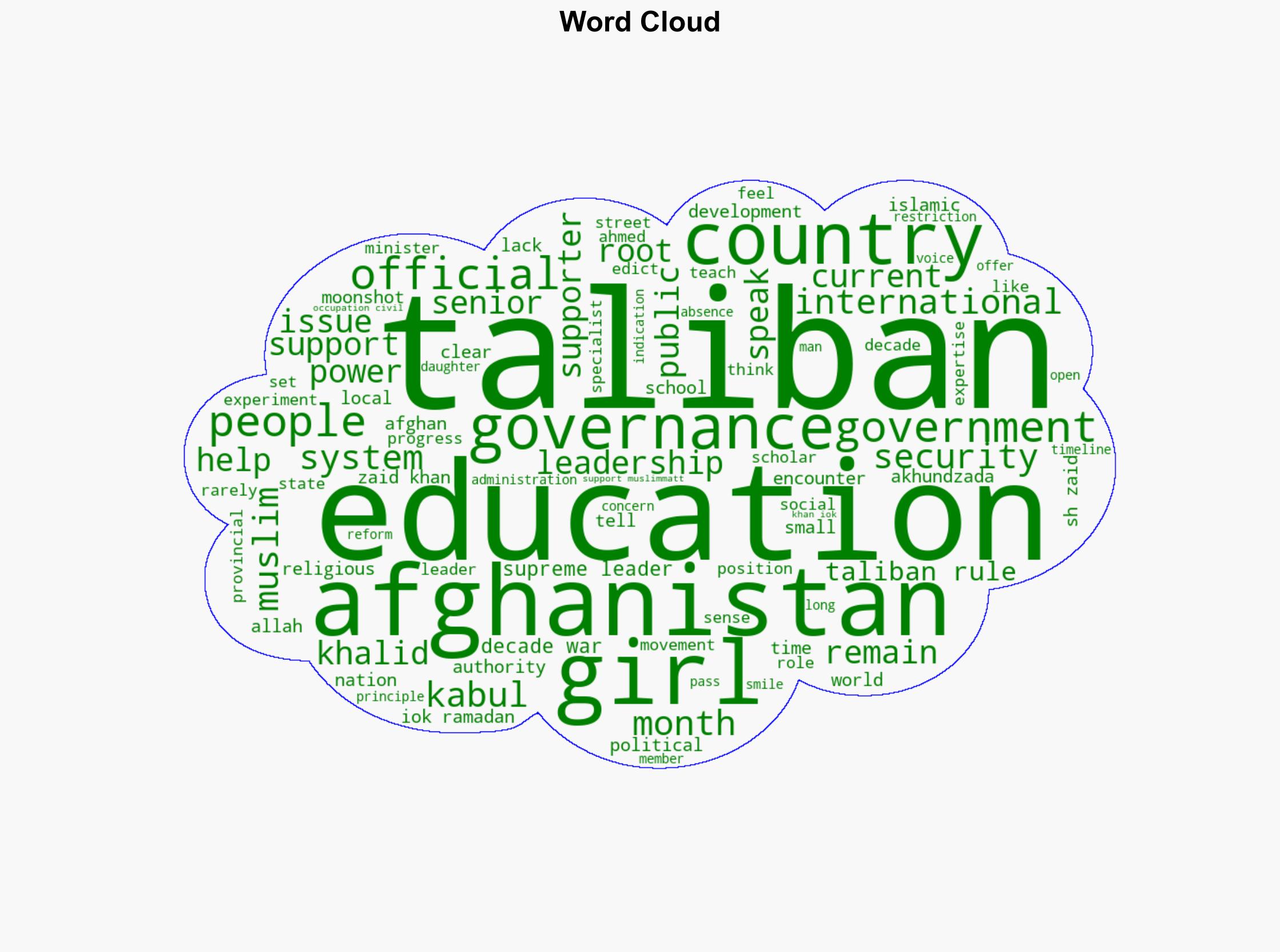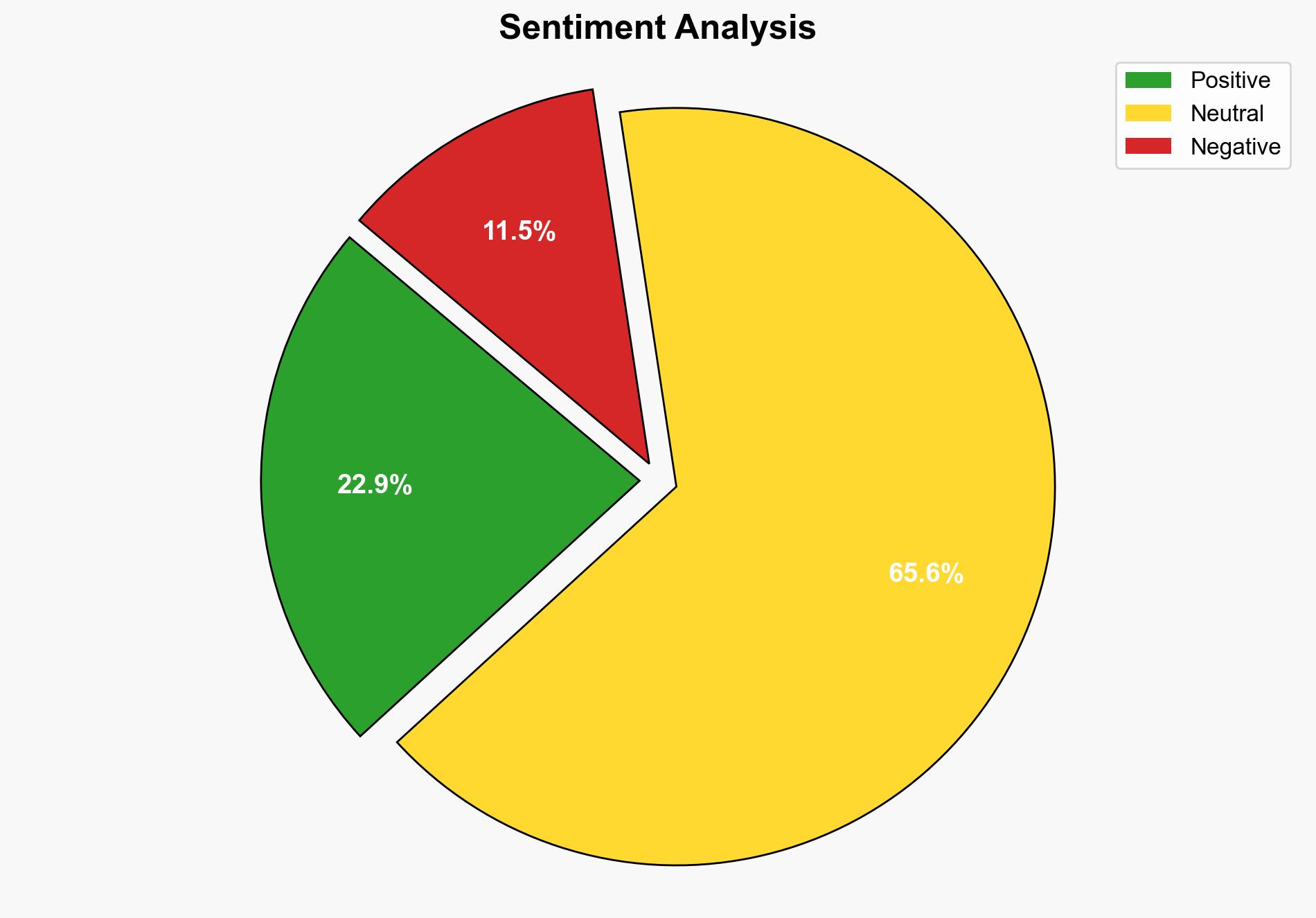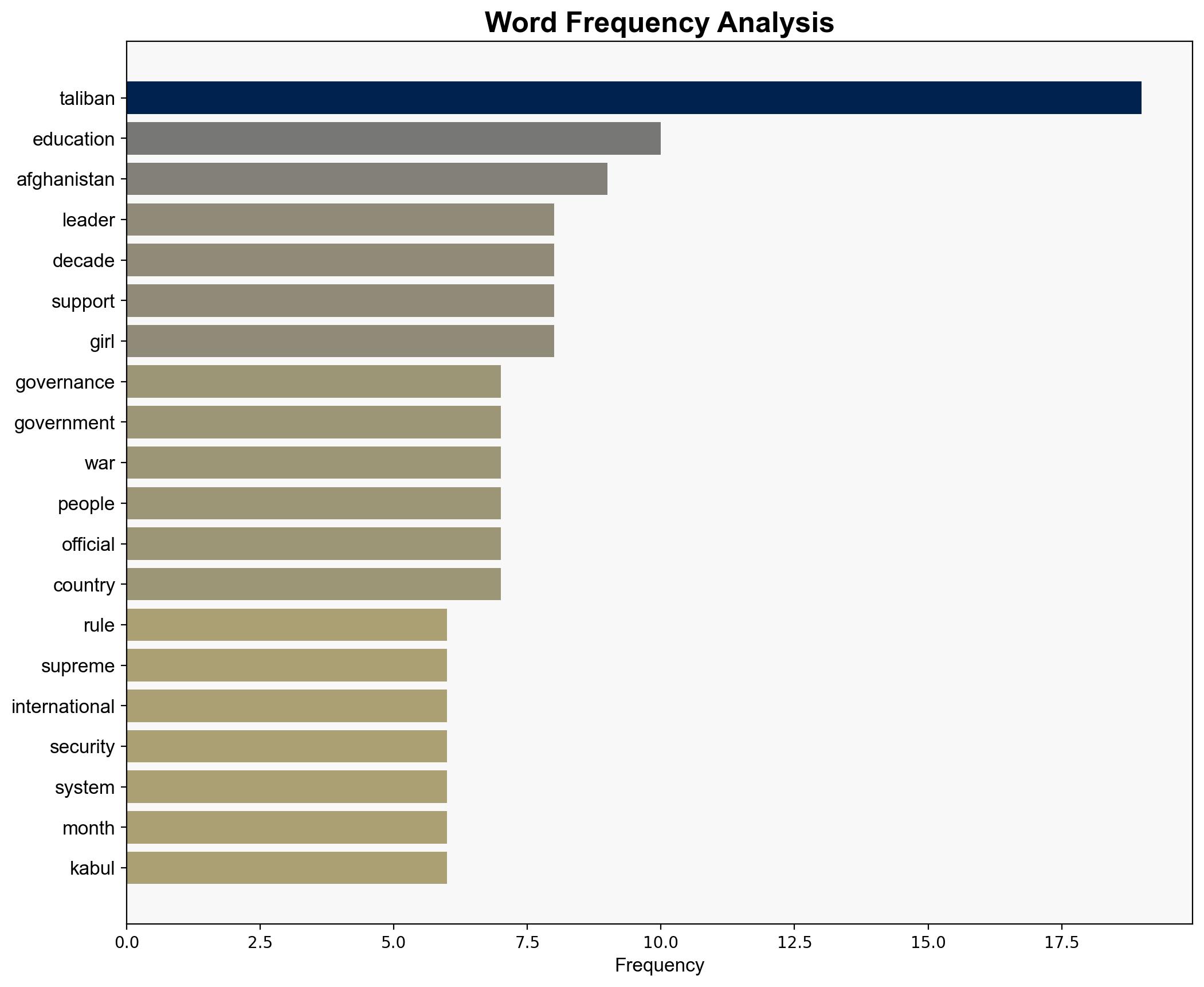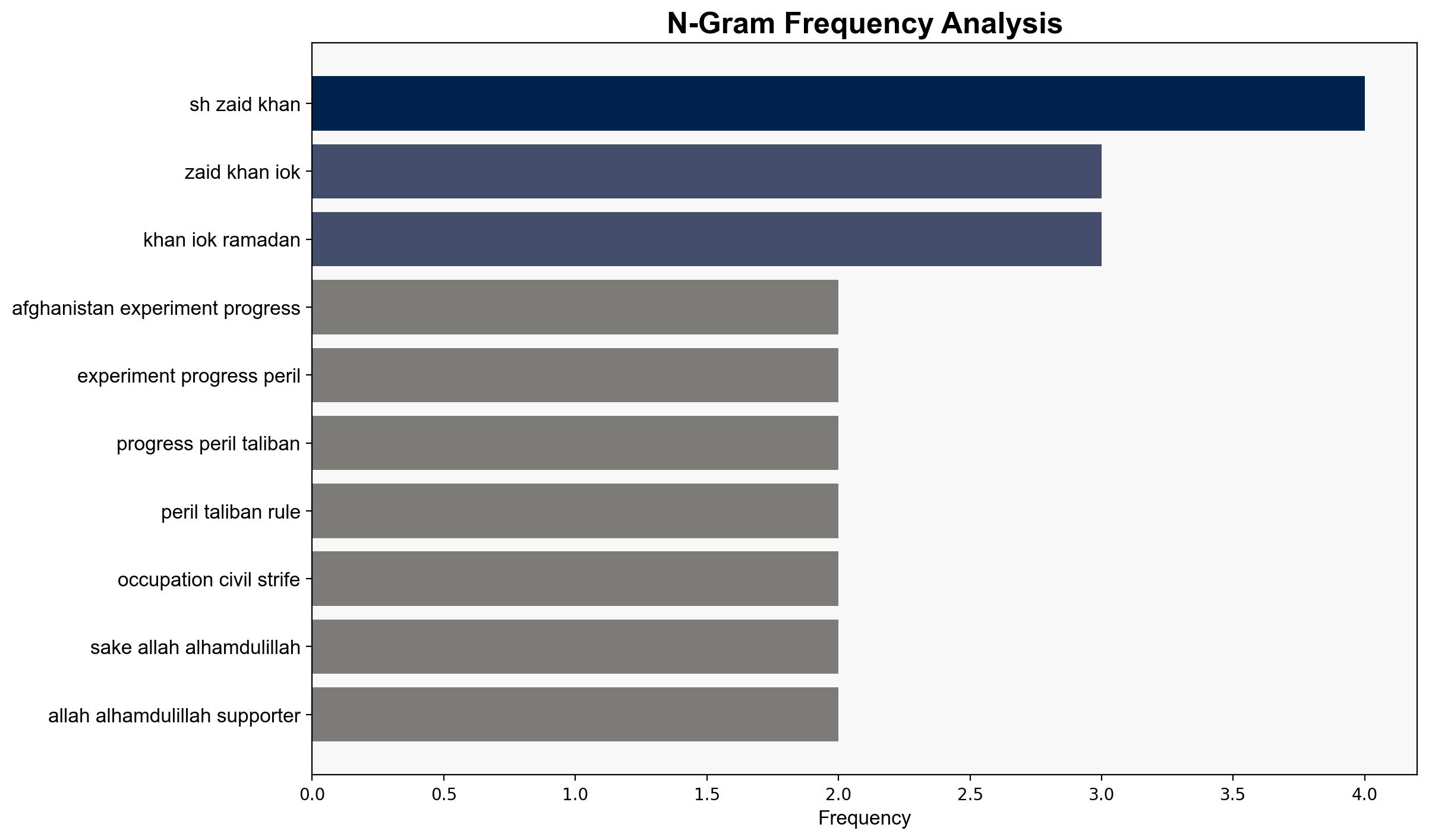Afghanistans Experiment Progress and Peril Under Taliban Rule – Muslimmatters.org
Published on: 2025-08-16
Intelligence Report: Afghanistan’s Experiment Progress and Peril Under Taliban Rule – Muslimmatters.org
1. BLUF (Bottom Line Up Front)
The Taliban’s governance in Afghanistan presents a dual narrative of stability and internal division. The most supported hypothesis suggests that while the Taliban has restored basic security, it faces significant challenges in governance due to internal fractures and lack of professional capacity. Confidence level: Moderate. Recommended action: Engage in diplomatic efforts to encourage inclusive governance and monitor for potential destabilization.
2. Competing Hypotheses
1. **Hypothesis A**: The Taliban’s rule is stabilizing Afghanistan by providing security and reducing corruption, leading to a more unified and effective governance structure.
2. **Hypothesis B**: The Taliban’s governance is marked by internal divisions and a lack of professional capacity, undermining its ability to effectively manage the country despite restored security.
Using ACH 2.0, Hypothesis B is better supported due to evidence of internal fractures, lack of professional governance experience, and reliance on religious legitimacy over technocratic expertise.
3. Key Assumptions and Red Flags
– **Assumptions**: Hypothesis A assumes that security equates to effective governance. Hypothesis B assumes that internal divisions will significantly impact governance.
– **Red Flags**: Limited public appearances and communication from Hibatullah Akhundzada may indicate attempts to mask internal discord. The reliance on religious titles and historical legitimacy could be a facade for deeper governance issues.
– **Missing Data**: Detailed insights into the Taliban’s internal decision-making processes and the extent of professional capacity within its ranks.
4. Implications and Strategic Risks
– **Patterns**: The Taliban’s focus on religious legitimacy and security may lead to neglect of economic and social development.
– **Cascading Threats**: Internal divisions could lead to factionalism, increasing the risk of civil unrest or insurgency resurgence.
– **Potential Escalation**: Economic mismanagement and social constraints could exacerbate public dissatisfaction, potentially leading to protests or international sanctions.
5. Recommendations and Outlook
- Engage in diplomatic dialogue to encourage inclusive governance and capacity building within the Taliban administration.
- Monitor for signs of internal division and potential destabilization, particularly in provincial areas.
- Scenario Projections:
- Best: The Taliban stabilizes governance by integrating technocratic expertise and addressing internal divisions.
- Worst: Internal divisions lead to factional conflict, destabilizing the region and inviting external intervention.
- Most Likely: The Taliban maintains basic security but struggles with effective governance due to internal challenges.
6. Key Individuals and Entities
– Hibatullah Akhundzada
– Mohammed Khalid
– Taliban Leadership Council
7. Thematic Tags
national security threats, governance challenges, regional stability, internal divisions




